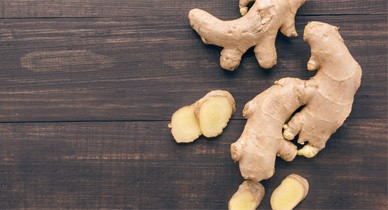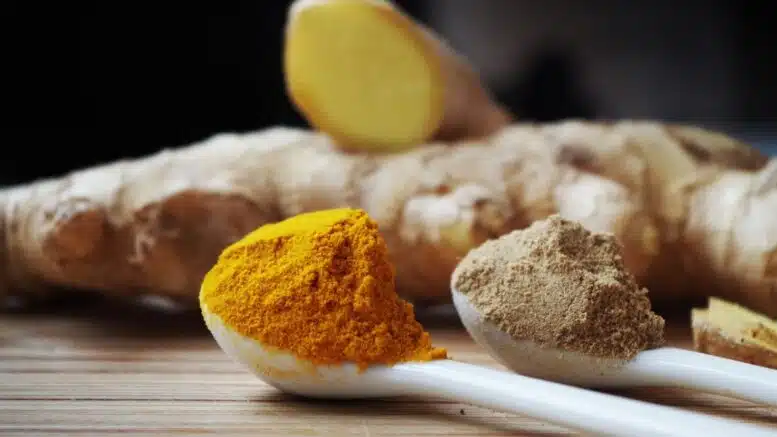If you live somewhere in Asia, then you may have heard about turmeric a lot. It is known as the golden spice, which helps us in dealing with multiple health issues. However, we all know that turmeric is best to heal open wounds. Even medical professionals use this plant from the ginger family as a source to recover from injuries faster. On the other hand, turmeric is a part of every household, primarily if it is situated in South Asia. India is known for its spices, and curcumin is one of the spices they use a lot in their foods.
Is turmeric good for wound healing?
Turmeric is miraculous if you want to stop bleeding instantly. We have all been in tricky situations where we end up getting a cut or two. Blood is not pleasant to see, especially if it is in a significant amount. At least once in life we’ve witnessed someone around us getting hurt seriously enough to the point that they bleed profusely. Instead of panicking, you can use turmeric to settle their wounds and stop the blood. It is a natural remedy that most people use for nasty cuts and wounds. Not only does curcumin helps healing the injury, but it also helps in getting rid of scars.
How to apply turmeric to an open wound?
Well, there is no rocket science when it comes to turmeric and its application. However, the things to consider when applying this spice is its consistency. There are two kinds of turmeric available in the market; one in powder and the other in raw form. Most people use the powder form of turmeric, also known as curcumin, while others use the solid or raw vegetable. You cannot easily apply solid turmeric to the wound, although a freshly cut slice of the root it is considered more effective. On the other hand, powdered turmeric is easy to be used and applied to the bleeding cut. You can put the curcumin powder on the wound directly and watch the blood stop in a really short time.

How does turmeric help in healing wounds?
Well, we know turmeric is the star of the show when it comes to reducing bleeding, but what about its other properties? You can apply this ginger-like spice on any kind of injury since it also has anti-bacterial and anti-inflammatory properties that help in mitigating bacterial infections. When you keep the wound open, it heals faster. However, you need to be cautious sometimes as the injury can catch bacteria and become infected. By sprinkling some curcumin powder, you can effectively prevent this from happening.
Antibacterial properties
People often search for which ointment is the best for wound healing. You do not need a pharmaceutical lotion if you have turmeric to heal your wounds since it has anti-bacterial properties that work best to help you recover more quickly. In fact, an infection can make a wound become inflamed and filled with pus, increasing the time required before tissues can regenerate themselves. Curcumin natural antimicrobial activities make it highly active against many strains of common bacteria that often cause wound infections.
Anti-inflammatory properties
Whenever we get a cut or wound, the pain is hard to endure, and inflammation definitely makes everything much woreser. It hurts to move the particular or affected area due to soreness. If you feel that the inflammation is becoming unbearable, you can apply or consume turmeric to help getting rid of it. You will be surprised at how effective curcumin is in reducing inflammation, as many studies already proved.
Turmeric is an ancient remedy that was used used in the past for beauty purposes. Earlier, there was no particular medicine to treat patients properly, but people knew very well how curcumin could prevent aging. Now we know this effect is due to its antinflammatory properties that actively prevent tissue againg. Hence, turmeric pills became a medicinal industry as it showed quite promising results to heal the body.
How can you use turmeric in everyday life?
Turmeric is a particular ingredient, and there is no denying that it has excellent medicinal properties. However, let’s be real; having raw curcumin available at hand at all times is not an easy task. We need sustainable ways to incorporate turmeric into our dietary routine if we want to enjoy its anti-aging properties.
There are a variety of ways to incorporate turmeric into your diet. Turmeric and black pepper makes a great combination as its bitter and spicy taste becomes more bearable and it gets absorbed even better when you mix these two ingredients together. We may all have regular turmeric in our houses, but the content of curcumin is not high in them.

Smoothies
We all love smoothies, but what if someone tells you to add turmeric to it? You will feel disgusted at the thought, but trust us, it is not half as bad as it seems. You can add this spice to any smoothie you make for yourself, preferably in a vegetable-based recipe.
The best way to add turmeric to your smoothie is in the raw form. You can get fresh spice from the market, peel, and cut it to add to the smoothie. The natural form works best as it has a high content of curcumin in it.
Add to food
The easiest thing to do when you want to consume turmeric every day is to add it to your food. Many Asian cuisines include this spice as part of the recipe to make it more delicious. Turmeric not only makes the food flavorful but also adds nice color to the dish.
You can make healthy recipes and add a little bit of turmeric to make it healthy and delicious. By doing so, you will always have a ready-to-use stash of curcumin powder to heal any wound. If you do not like turmeric’s raw taste, then do not worry as its taste changes considerably once cooked. However, moderation is the key when it comes to natural remedies. Do not over consume turmeric, thinking it will alleviate your wounds faster. Sprinkling some poweder on the injury once per day is generally sufficient.
The golden milk
If you live South Asia or Asia in general, you must be aware of the golden milk. People mix turmeric in milk along with honey and nuts to make it healthy and nutritious. Most people enjoy this drink in the winter season to keep them warm and boost their immunity.
Turmeric with Bioperine works phenomenally as its percentage of absorption increases. It is essential to be aware of your health and include simple habits to ameliorate it. Turmeric can go a long way towards improving your health, both in case you need to heal a wound, or if you’re looking for a cheap but incredibly natural remedy to reduce inflammation and aging.
Article edited and fact checked by our editorial team
About the authors:

Dr. Claudio Butticè, Pharm.D., is a former Pharmacy Director who worked for several large public hospitals in Southern Italy, as well as for the humanitarian NGO Emergency. He is now an accomplished book author who has written on topics such as medicine, technology, world poverty, human rights, and science for publishers such as SAGE Publishing, Bloomsbury Publishing, and Mission Bell Media. His latest books are “Universal Health Care” (2019) and “What You Need to Know about Headaches” (2022). A data analyst and freelance journalist as well, many of his articles have been published in magazines such as Cracked, The Elephant, Digital Journal, The Ring of Fire, and Business Insider. Dr. Butticè also published pharmacology and psychology papers on several clinical journals, and works as a medical consultant and advisor for many companies across the globe.
References:
- Peng Y, Ao M, Dong B, Jiang Y, Yu L, Chen Z, Hu C, Xu R. Anti-Inflammatory Effects of Curcumin in the Inflammatory Diseases: Status, Limitations and Countermeasures. Drug Des Devel Ther. 2021 Nov 2;15:4503-4525. doi: 10.2147/DDDT.S327378.
- Akbik D, Ghadiri M, Chrzanowski W, Rohanizadeh R. Curcumin as a wound healing agent. Life Sci. 2014 Oct 22;116(1):1-7. doi: 10.1016/j.lfs.2014.08.016.
- Tejada S, Manayi A, Daglia M, Nabavi SF, Sureda A, Hajheydari Z, Gortzi O, Pazoki-Toroudi H, Nabavi SM. Wound Healing Effects of Curcumin: A Short Review. Curr Pharm Biotechnol. 2016;17(11):1002-7. doi: 10.2174/1389201017666160721123109.
- Adamczak A, Ożarowski M, Karpiński TM. Curcumin, a Natural Antimicrobial Agent with Strain-Specific Activity. Pharmaceuticals (Basel). 2020 Jul 16;13(7):153. doi: 10.3390/ph13070153.
- Heidari-Beni M, Moravejolahkami AR, Gorgian P, Askari G, Tarrahi MJ, Bahreini-Esfahani N. Herbal formulation “turmeric extract, black pepper, and ginger” versus Naproxen for chronic knee osteoarthritis: A randomized, double-blind, controlled clinical trial. Phytother Res. 2020 Aug;34(8):2067-2073. doi: 10.1002/ptr.6671.
- Aryaeian, N., Shahram, F., Mahmoudi, M., Tavakoli, H., Yousefi, B., Arablou, T., & Jafari Karegar, S. (2019). The effect of ginger supplementation on some immunity and inflammation intermediate genes expression in patients with active rheumatoid arthritis. Gene, 698, 179-185.
- Khajeh Pour S, Blanton C, Ghimire B, Aghazadeh-Habashi A. Development of a rapid, sensitive, and selective LC-MS/MS method for quantifying curcumin levels in healthy human urine: Effect of pepper on curcumin bioavailability. Food Sci Nutr. 2023 Sep 18;11(12):7732-7741. doi: 10.1002/fsn3.3691.
